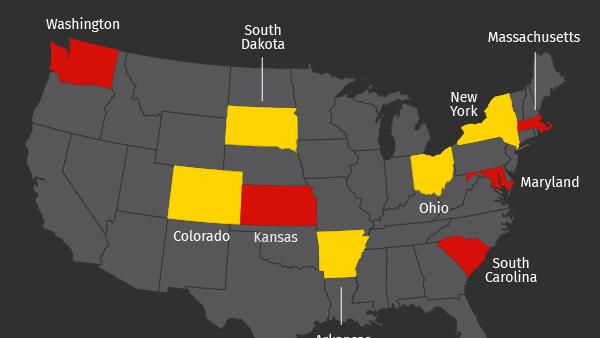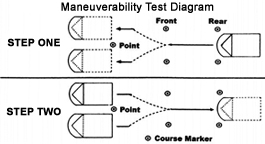
Drivers Test Parallel Parking Dimensions Mn
Pokemon Emerald Randomizer is a RPG video game published by Game Freak released on January 5, 2005 for the GameBoy Advance. Welcome to nuzlocke randomizer challenge! Be prepared to face the ultimate pokemon rules, if you succeed, true master thou shalt be. Any pokemon that faints must be stored in pc box and released permanently. Pokemon Emerald Randomizer GBA (USA) ROM Pokemon Emerald Randomizer for Nintendo Gameboy Advance/GBA is a Monster Capture RPG game, Developed by Game Freak and Published by Nintendo. Welcome to nuzlocke randomizer challenge! Pokemon Emerald Randomizer.gba From 4shared.com 16 MB Our goal is to provide high-quality video, TV streams, music, software, documents or any other shared files for free! Registered users can also use our File Leecher to download files directly from all file hosts where it was found on. ROM Hack with Randomizer and/or Nuzlocke options built in? Post-Kanto: GBA: Pokemon Orange Islands (I recommend playing Ash Gray before this) GBC. Hoenn: GBA (Enhancement): Theta Emerald Renev or Delta Emerald GBC (Incomplete): Ancient Ruby / Sapphire Open World. Pokemon emerald randomizer nuzlocke download gba rom for android.
Does anyone have any tips or tricks? I'm super nervous as this will be my first time taking the test. I also have a few questions for Minnesota drivers.
Do you have to take the knowledge test again?. How big were the spaces for parallel parking and 90 degree backs?. Do you have to do parallel parking and 90 degree backs in one smooth motion or are you allowed to correct yourself?. Is there anything else 'special' you have to do besides parallel parking, 90 degree backs, and 3 points?edit: I'm not from out of state or previously licensed. I'm a Minnesota resident and turned 16 about a month ago. I passed the knowledge test first try about 9 months ago to get my permit.2nd edit: Thanks to everyone for the advice! I guess I'll see you all on the roads:).
I believe the MN-regulated parallel space is something like 10ft wide and 22ft long, it's enormous. At Chaska, they have you 90 degree back into a 10ft wide spot marked with flags (think little marker flags, not the American flag or anything). They're very friendly and the DMV that the testing is based out of is really modern and nice. They give you a little sheet prior to the start of your test that lists off what they want you to demonstrate as far as the functions of your car, like blinkers, horn, mirrors, hazard lights, parking brake, etc. My SO just passed there with ease.Seatbelt first. Have the keys in your hand, not in the ignition, even if the car is off.Listen carefully and process what is being said. They sometimes tell you to go down the wrong way on a one way.
This DMV practice test will teach you all about the rules of parking in Minnesota. The questions are based on Minnesota DVS (aka DMV) Permit Test. Time limit: 0 Test. Maine requires parallel parking proficiency as part of its driving test. Freedom-yearning teenagers in Maryland can collectively breathe a sigh of relief, because there's one less bit of red tape — err, orange cone — between them and a coveted driver's license.
Ask them and confirm, or ask if they mispoke. Never do anything that you would not do on a real street.Don't hit anything, including letting the flag on the parking and the like.These are all automatic fails.And lastly, breathe and try to be relaxed.If you fail, ask what you should work on.Good luck. Is it a closed course? I'm not from that part of the city so I don't know, but if it is they are extra critical of your driving on a closed course.-I thought the spots were fine to get into, my SUV got in an out of them easy, just be careful on your way out of the spots, I have had many friends who parked perfectly and then hit a cone on the way out, which is a fail-a little tip my drivers ed teacher told me is if you are going to wear sunglasses over exaggerated your head movements when looking in the mirrors.
The testing instructors look at your eyes moving but they can't see them behind sun glasses, I didn't have sunglasses on when I took my test in JanuaryAnd overall just remember everything you learned in drivers ed and don't be super uptight and stressed about it. Also have your social security number with you, if you don't know it, and money, I think it is cash or credit, I could be wrong.Good luck.
Confidence is key. I was really comfortable with driving when I tested, so I passed on the first try, even though I hit the curb while leaving the parallel parking spot (which I had NAILED, just forgot to put the car in Drive after backing in), and I hit the curb in the downhill parking segment, and I failed to signal while pulling over at the end.- Try not to stress.
If you don't pass tomorrow, there will be another day. You will get your license. Have fun and know that you own that road!.
Parallel parking can be frightening for any driver. You are oftentimes forced to park in a tight parking spot in-between two cars. Your goal is not to hit any of the vehicles around you while not parking too close to the road, curb or any cars. Also, you may be trying to parallel park in a busy street, which can trigger anxiety.
With all these different factors at play, parking parallel can be difficult. However, there are parallel parking rules and a specific process that will help you understand how to parallel park. Additionally, there are 34 states that have a DMV parallel parking section in thedriving test, so knowing how to parallel park perfectly is crucial. Learn about the process, tips and places where you can and cannot park below.
The Process of Parallel Parking
Trying to learn how to parallel park can be tough. It is something that many drivers are not forced to do on a daily basis. Also, it is a parking method that is difficult to learn because of all the specific steps that must be followed.
If you are preparing to take your driving exam or just want to improve your parking, the parallel parking guide below will help you. If you follow each step, you will learn the easiest way to parallel park.
Find a Parking Spot
Find a parking spot where you can safely park in without damaging your vehicle. The parallel parking measurements are something to consider.
You want to find a space that is approximately nine feet long and 20 feet wide. Also, make sure the location that you find is a legal parking area and not a tow-away zone.
Check Your Mirrors
The second step in the parallel parking instructions is to check your rear-view, left and right side mirrors for traffic as you approach the parking spot.
You want to ensure that there is no vehicle immediately behind you. As you begin to approach the parking space, slowly brake and use your turning signal.
By doing so, you are letting drivers know that you are trying to park. If another vehicle comes up behind you and is not going around you, let them know that you are parking.
Position Your Vehicle
You want to position your car with the vehicle that is parked in front of the spot you want to park in. The best way to parallel park is by aligning your bumper with that adjacent vehicle’s bumper.
Make sure that you do not get too close or far from the automobile. You want to be two feet away from the car. This will allow you to have enough room to back into the parking spot without scraping the other vehicle.
Put Your Car in Reverse
Make sure that there is no traffic, bike or pedestrian behind you before parallel parking. Once you see the road is clear, put your vehicle in reverse.
Look over your shoulder towards the space and slowly begin to reverse into the parallel parking space. Once you see your back seat is aligned with the front car’s bumper, turn your steering wheel quickly towards the parking space.
You want to slowly continue to reverse until your car is at a 45-degree angle entering the spot.
When your tire is near the curb, you must turn your steering wheel back towards the road and slowly move backwards. You want to continue driving in reverse until you are close to the vehicle parked behind you.
Move Forward and Center the Vehicle
Put your car in drive and align yourself in-between both vehicles. Once your vehicle is straight and you are in the parking spot, make sure your parallel parking distance from the curb is no more than one foot.
You do not want to be far from the curb, as that increase the chances of a passing vehicle scraping the side of your car.
How to Exit a Parallel Parking Space
Now that you know the steps to parallel parking, it is just as important to know how to exit the parking space. You cannot just turn and drive out of the parking spot. There is a guide that you must follow to leave as well.
Put Your Car in Reverse

When you are ready leave, it is important to make sure there are no pedestrians behind your vehicle. Once your surroundings are clear, put your car in reverse and get as close to the car behind you as possible without hitting it.
Put Your Car in Drive
You now have to turn your steering wheel all the way to the left. Before driving off, you must put your turning signal on. This will indicate to other drivers that you are leaving the parking spot. Once there is no traffic or pedestrians in the area, make sure you have enough room from the car in front of you and drive out of the parallel parking space.
Where to Practice Parallel Parking
Now that you are familiar with the parallel parking guide, you are probably wondering where to practice parallel parking. If you are looking to practice parking parallel for the first time, you can train on your driveway.
You do not want to practice parking in between two cars right away because of the possibility of an accident. Instead, place two cones 20 feet away from each other and start practicing.
Once you are comfortable enough, you can begin to park in between vehicles. Also, you can train in an empty parking lot or any area that will allow you to place cones. Furthermore, it is important to avoid practicing in a location with heavy traffic.
Where You Cannot Parallel Park
You are not able to parallel park anywhere you would like. Just because you see an open space on the side of the road does not mean you can park there. You cannot park:
- Near a fire hydrant.
- Within 30 feet of a stop sign.
- In a train or bus lane.
- Where curbs are marked red.
- On a crosswalk or bike path.
- On private property
- On another person’s driveway without consent.
If you find a parallel parking spot that is not in any of the locations listed above, you can probably park there. Just make sure to follow this parallel parking guide.